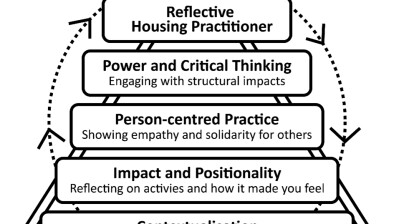Opinion: Cladding Bill’s impact still to be felt

Shona Frame and Ryan McCuaig
The full impact of the Cladding Remediation Bill, which was recently passed in the Scottish Parliament, is still to be felt within the construction sector, write Shona Frame and Ryan McCuaig.
The 2017 Grenfell Tower tragedy, which claimed 72 lives, put a sharp focus on the safety of cladding systems within residential properties. This has now become the subject of increased scrutiny amongst homeowners, tenants, property developers and the construction industry.
A flurry of new legislation and regulations have since followed including the Housing (Cladding Remediation) (Scotland) Bill passed by the Scottish Parliament last month.
The Bill, which is awaiting Royal Assent to become enshrined in law, is aimed at dealing with the safety of existing buildings. It sets out to prioritise residents’ safety and clarify accountability for those responsible for any failings related to defective cladding. It applies to buildings over 11 metres in height incorporating a form of external wall cladding which include at least one flatted-dwelling and were constructed or have undergone development between June 1992 and June 2022.
The Bill introduces several key measures including the provision for Scottish Ministers to arrange for a “single-building assessment” to be carried out without the consent of its owner or occupier following a seven-day notice period. Failure to supply reasonably required information for carrying out such an assessment without an bona fide excuse will be a criminal offence. The assessment will determine the level of fire risk posed by the cladding and the urgency of remediation required. Scottish Ministers may also arrange for an “additional work assessment” if that is necessary to allow the single-building assessment to be carried out.
Under the terms of the Bill, Scottish Ministers will maintain a new Cladding Assurance Register to record when a single-building assessment has been carried out and any works that were deemed to be required. This will also identify any direct or indirect cladding-related risks to human life that need to be eliminated or mitigated. It will be a criminal offence for a person to provide false or misleading information for the register.
Where risks are identified, the Bill empowers the Scottish Ministers to arrange any required works to be carried out without the consent of owners or occupiers by the end of a 21-day notice period. More urgent remediation work can also be ordered with a shorter notice period “as circumstances permit”. Where there is a substantial risk to occupants, Scottish Ministers may also order evacuation of the premises.
The Bill also gives the Scottish Ministers power to establish a Responsible Developers Scheme to ensure that developers contribute towards the costs of addressing issues identified. Those who are eligible to join this scheme but who choose not to, or are removed from it, may face difficulties in obtaining building control approval on future developments. This reflects the terms of the similar Responsible Actors Scheme set up in England and Wales.
As developers in Scotland await further details of the Responsible Developers Scheme including the potential implications for not joining or failing to comply with it, it is likely that this will be presented as an ‘offer not to be refused’.
The assessments are likely to result in additional demand for remedial works, with an associated downstream impact on contractors and consultants if developers are able to seek recourse for failings in the original build.
While many developers will have already been involved in cladding remediation in the post-Grenfell era after carrying out retrospective inspections of their buildings, we will see further pressures on securing specialist support. For example, the need for fire engineering inspections, which are already in high demand, will likely increase as developers who have not yet been proactive require the services of suitably qualified experts.
The search for as-built documentation is also likely to be challenging, particularly for the older properties included within the legislation.
The Bill could also offer some longer-term benefits for property owners. Properties deemed safe under the Cladding Assurances Register could, for example, see their commercial value and marketability enhanced. The register also provides a useful tool for prospective buyers determining the fire safety of a building and any outstanding works required.
With new housing remaining a key priority, the Scottish Government will want to ensure these new measures will not detract developers from investing in the future. As this latest Bill becomes law amongst a raft of similar measures north and south of the border, including the Building Safety Act 2022 and the proposed Scottish Building Safety Levy, its ultimate impact on the property development market remains to be seen.
The full details of this landmark legislation will come in the form of secondary legislation making it essential for developers and those within the construction industry to keep a close eye on its progress through the Scottish Parliament.
Shona Frame is a partner, and Ryan McCuaig is an associate, both specialising in infrastructure, construction and energy disputes at international law firm CMS.









